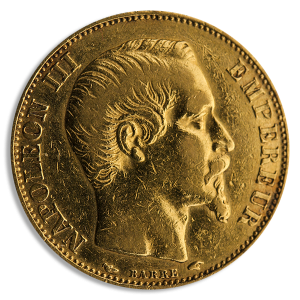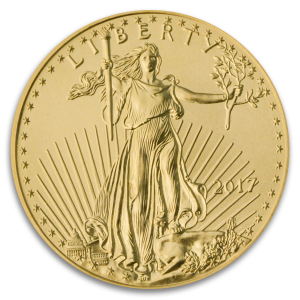British Gold Sovereign (Dates/Types Vary)
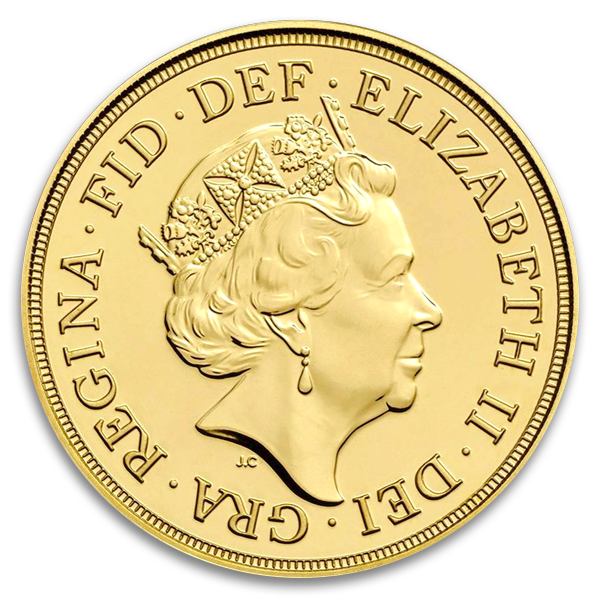
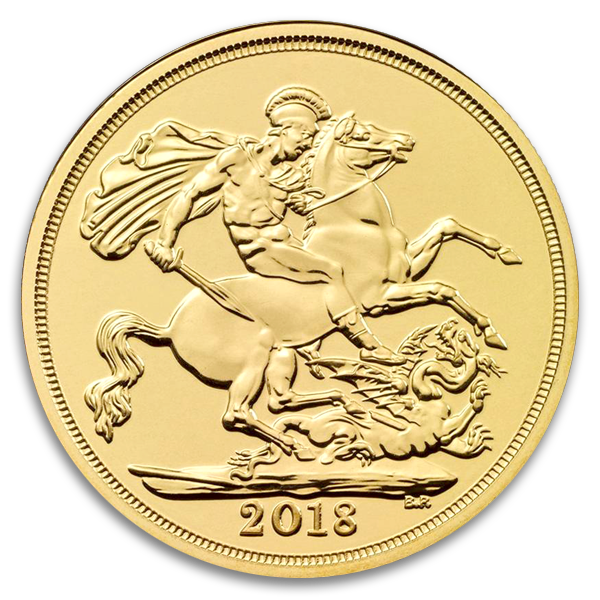



History
British Gold Sovereign coins are some of the most well-known and highly respected gold coins in the entire world. They have stood for integrity and value for centuries.
As the British empire grew and contracted, one thing remained constant – the value of these popular gold coins.
Design
The obverse of these coins always depicts the current monarch and typically around the monarch is a Latin inscription, introducing the king or queen and proclaiming their title.
The earliest known gold sovereigns known were those struck in 1489, during the reign of King Henry VII. But by 1603, the practice of striking this particular British gold coin had gone out of favor.
But after Napoleon’s defeat at Waterloo in 1815, the British government reevaluated its coinage, as a true major world power. A new 20 Shilling gold coin was created, and it acquired the name of a “Sovereign.” This coin, honoring then King George III , also bore the timeless design by the Italian engraver, Benedetto Pistrucci, who created the famous “Saint George Slaying the Dragon,” image adorning the reverse.
The reverse design was replaced in 1825 by a Royal Coat of arms, which remained on the reverse of these gold sovereigns until 1871. In 1887, during Queen Victoria’s Jubilee, the Pistrucci design was once again implemented onto the reverse and there it has remained.
The British Sovereigns saw each of these monarchs come and go and they were portrayed on coinage during their reigns:
Simply click the “Add to Cart” button now or call 1-800-880-4653 to speak to one of our highly trained numismatists, who will be very happy to assist you.
British Gold Sovereign coins are some of the most well-known and highly respected gold coins in the entire world. They have stood for integrity and value for centuries.
As the British empire grew and contracted, one thing remained constant – the value of these popular gold coins.
Design
The obverse of these coins always depicts the current monarch and typically around the monarch is a Latin inscription, introducing the king or queen and proclaiming their title.
The earliest known gold sovereigns known were those struck in 1489, during the reign of King Henry VII. But by 1603, the practice of striking this particular British gold coin had gone out of favor.
But after Napoleon’s defeat at Waterloo in 1815, the British government reevaluated its coinage, as a true major world power. A new 20 Shilling gold coin was created, and it acquired the name of a “Sovereign.” This coin, honoring then King George III , also bore the timeless design by the Italian engraver, Benedetto Pistrucci, who created the famous “Saint George Slaying the Dragon,” image adorning the reverse.
The reverse design was replaced in 1825 by a Royal Coat of arms, which remained on the reverse of these gold sovereigns until 1871. In 1887, during Queen Victoria’s Jubilee, the Pistrucci design was once again implemented onto the reverse and there it has remained.
The British Sovereigns saw each of these monarchs come and go and they were portrayed on coinage during their reigns:
- Queen Victoria
- King Edward VII
- King George V
- King Edward VIII
- King George VI
- Queen Elizabeth II
- King Charles III
Simply click the “Add to Cart” button now or call 1-800-880-4653 to speak to one of our highly trained numismatists, who will be very happy to assist you.
| Specifications | |
| Year | Various |
| Denomination | 1 Sovereign |
| Grade | NA |
| Country | Great Britain |
| Grading Service | NA |
| Weight | 0.2354 Troy Ounce |
| Fineness | .9167 Fine Gold |
| Diameter | 22.05 mm |
| Manufacturer | The Royal Mint |





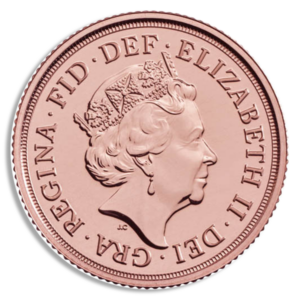
 Quick View
Quick View